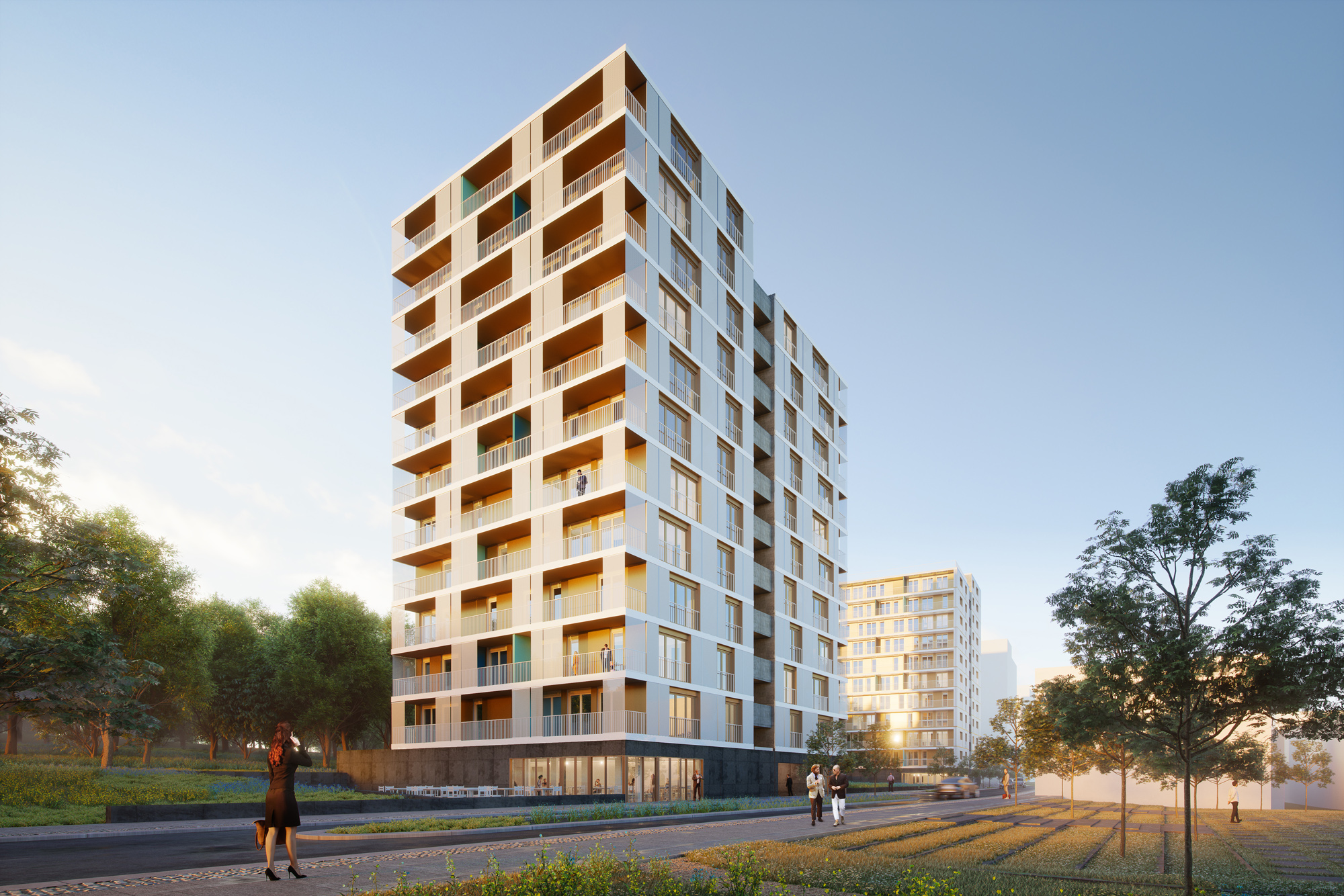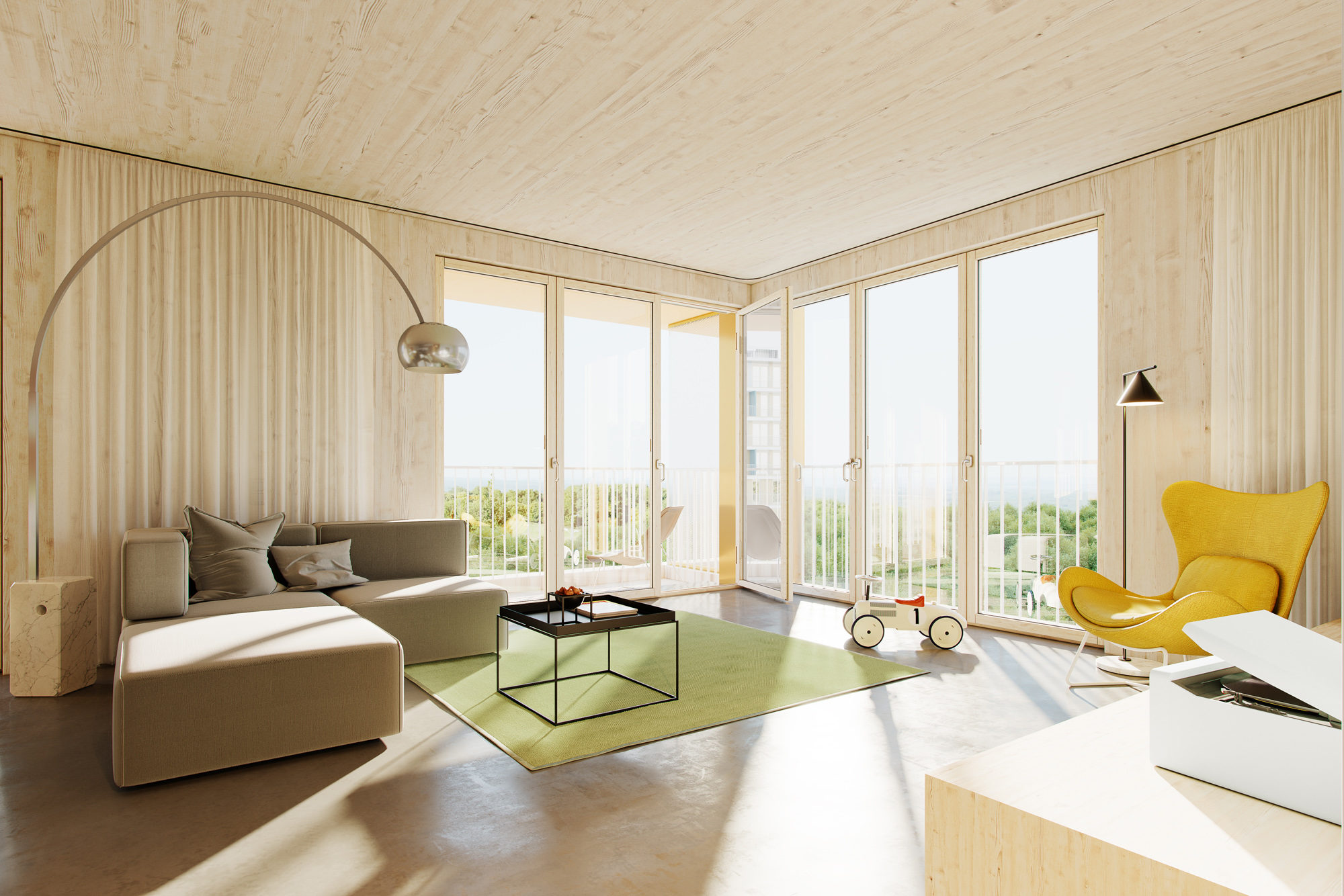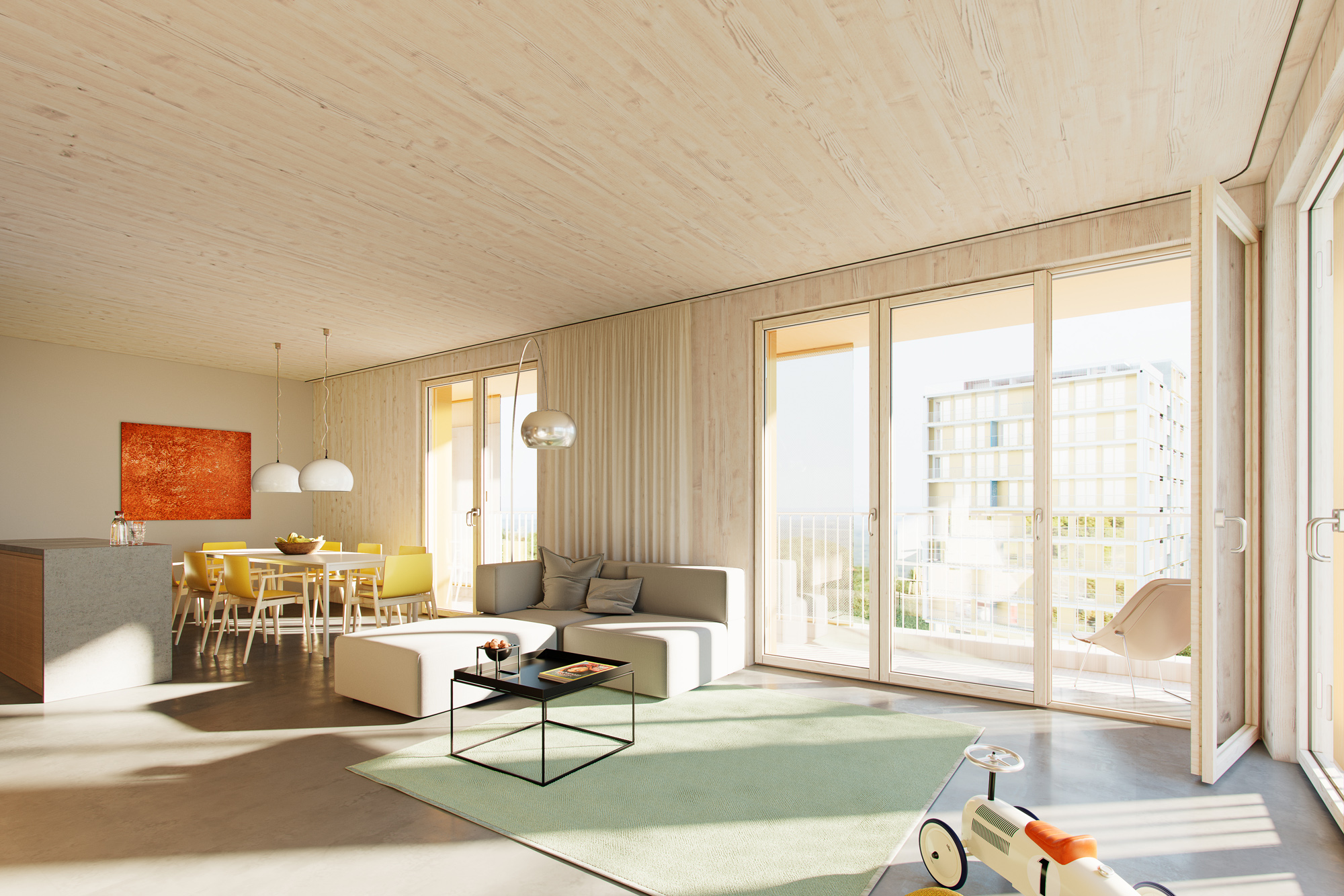Sustainability
Ella Einhell: "Happy beef is always blue"
Ella Einhell turns bones into glass, drawing on an old …

Steel, concrete, plastics - pure environmental pollution. This is how the construction industry has been building for decades. To this day it accounts for more than 50 percent of global waste. The architectural office Partner und Partner from Berlin wants to change this: They are currently building two Woodscraper, twelve-storey wooden high-rise buildings, which are constructed according to the cradle-to-cradle principle and whose individual parts can all be recycled. Why are these houses only now coming onto the market? And are they the houses of the future? We talked about this with Jörg Finkbeiner, managing director of Partner und Partner.
CCB Magazine:Mr. Finkbeiner, you completed an apprenticeship as a carpenter before studying architecture. Do you still remember your first piece of furniture you built yourself?
Jörg Finkbeiner:Oh yes, I was twelve or thirteen years old, so I built myself a coffee table. It didn't last long, but my passion for wood caught fire from then on. I have always loved to build and tinker. My journeyman's piece after my carpentry apprenticeship was a standing work desk, for which I even received a guild award. The desk still stands today.
With our Woodscrapers we enter completely new fields. All building materials can be separated and sorted into their respective material cycles. This is the future
CCB Magazine:Together with your architectural office Partner und Partner, you are building two twelve-storey wooden high-rise buildings in Wolfsburg - the first of their kind. Wood, there resonates a well-being feeling and peace. What about safety and fire hazard? Is wood as a material even stable enough to build a high-rise building?
Jörg Finkbeiner:These are questions I am often asked. Wood burns, rots and creaks! But this is an erroneous picture. Wood burns, that is correct. But there are very clear fire protection regulations, especially for high-rise buildings, which you have to and can comply with. By the way, most people die in house fires not by burning, but by smoke poisoning. And the stairwells of our Woodscrapers are built in reinforced concrete, which is not negotiable in Germany. So nothing can burn there and the escape routes are passable even in case of fire. Also regarding the statics, wood is very safe with the right construction method. In Vienna, there is now a twenty-four-storey wooden high-rise building, which is, I think, 84 meters high. Wood can carry loads very well.

CCB Magazine:How will the woodscrapers be used when they are finished?
Jörg Finkbeiner:The majority of the units are residential units. Downstairs there are commercial areas, a small café, a bicycle rental, a laundry, things like that. But essentially it is a residential building. The wood creates a very special living atmosphere.
CCB Magazine:The Woodscrapers are built according to the cradle-to-cradle principle. On your homepage you also speak of "circular building". What does that mean?
Jörg Finkbeiner:As far as circular building is concerned, we are entering completely new territory with the Woodscrapers. This is the new thing about this type of timber construction. All building materials can be separated and sorted into their respective material cycles. For example, we do not use any toxic glues to join the wooden parts. Circular therefore means that the individual parts of the building can be dismantled after 50, 70, 100 years and completely recycled, for example for the construction of a new building. This corresponds to the C2C principle. Timber construction is ideally suited for this purpose because we only use prefabricated building elements, which incidentally also considerably shorten the construction time. Our construction project is also accompanied by a research project of the Deutsche Bundesstiftung Umwelt. An extensive life cycle assessment of both buildings was made, and everything was balanced down to the last screw. Compared to the same building of conventional style, which is made of reinforced concrete and plastic composites, we have a much better ecological balance. Our building is resource-positive, i.e. we do not produce waste during construction. Incidentally, more than 50 percent of global waste comes from the construction industry. We want to make a contribution here. Less waste is more future. We want to revolutionize the building sector.
More than 50 percent of global waste comes from the construction industry. We want to make a contribution here. Less waste is more future. We want to revolutionize the building sector
CCB Magazine:Since when has architecture actually dealt with C2C?
Jörg Finkbeiner:Before the Industrial Revolution we already built circularly. This was mainly due to the fact that buildings were constructed with few, regional and mainly natural or renewable building materials. To reuse a wooden beam after dismantling a house was easier, more economical and therefore self-evident. Today, this is no longer possible with global, branched supply chains and a vast number of complex building products. In this respect, we must speak of a system change, and this kind of thinking about architecture is relatively new.


CCB Magazine:How long does such a wooden house last?
Jörg Finkbeiner:That depends on how you care for it. The old town hall in Esslingen, for example, after all a six-story wooden building, will soon celebrate its 600th anniversary. Question answered?
CCB Magazine:What about the costs? Is building with wood according to the C2C principle more expensive?
Jörg Finkbeiner:Well, this question is asked very often. In short, wood scrapers will be about two percent more expensive to build than a conventional construction. But that doesn't include the fact that we build faster, produce no or very little waste and all materials can be reused. Our method also saves a lot of time and energy for house alterations. And: We have no toxic waste to dispose of.
CCB Magazine:The homepage of Partner und Partner states that buildings have a social impact on the environment. What is meant by this?
Jörg Finkbeiner:Wood appeals to people in many different ways: in its haptics, its smell, its aesthetics. And wood is also demonstrably good for sleep, the heart beats more quietly when one sleeps in a wood environment. Above all, however, the social effects refer to parameters such as climate-damaging construction, waste production, etc., which are avoided by C2C timber construction. These costs are communalized in conventional construction. If we build badly and produce waste, society pays for it in the end. In this respect, it naturally has an impact on society if we instead build resource-positive, climate-friendly houses.
CCB Magazine:Which actors have to be involved in circular construction to achieve the best possible result?
Jörg Finkbeiner:We tried to get all parties involved together early on and convince them of our idea. The specialist planners, for example, sat at the table from the very beginning. Everyone involved, from the structural engineer to the planner to the fire department, was initiated into our plans at an early stage and could present their objections and ideas. The interaction was very important to us.
CCB Magazine:How realistic is the building concept of Partner und Partner transferred to the big city and its needs? Could entire city districts be built as a C2C concept?
Jörg Finkbeiner:This is no longer a dream of the future. In Berlin-Tegel people are talking about 3000 to 5000 apartments in wood that are to be built - if the city is serious about it. And in Weissensee, a whole block of wooden houses has already been built. I'll go one step further: that's the way it has to be. And I am always asked, do we have enough wood? Yes, we do. With 12 to 15 percent of the annual timber harvest, we can cover the entire housing construction in Germany. And one thing is certain: concrete will soon be tight because we are running out of sand.
CCB Magazine:You are a member of the German Sustainable Building Council. So far, the association has certified around 6,000 sustainable buildings - a drop in the ocean, to put it bluntly. Once again: how viable is circular, sustainable building for the future? Who are the opponents? Who do we need to convince?
Jörg Finkbeiner:Quite a few questions! You know, the construction industry is a very slow industry. Reinforced concrete is the building material of the 20th century, all the value chains that have developed since the Bauhaus era are firmly established, and it will take time to change that. Moreover, many careers and reputations are attached to it. A changeover to wood would mean: more planners, structural engineers, architects, builders, skilled workers, etc. who would have to deal with it. These are enormous capacities that will not develop overnight. In case of doubt, you just do it the way you have always done it. Being the first to dare something new always involves a risk.
CCB Magazine:And what can politicians do to promote C2C construction and minimize risks?
Jörg Finkbeiner:The system change I mentioned before naturally goes beyond the mere planning and building of houses. Legal regulations must be followed and adhered to. But laws are always reactive regulations for problems that arise. Our world is dynamic, technological innovations come faster than laws can react. I would therefore like to see politics regulating fewer details, but instead creating proactive structures, laws that make innovation possible, at best, demand it. Then we would be much faster at implementing new ideas and concepts. In short: what is the exception today should become the rule.
CCB Magazine:How far are we still from a paradigm shift from fossil to post-fossil construction?
Jörg Finkbeiner:We are still at the very beginning. Especially in Berlin. But I'm an optimist. I have the feeling that something is about to slip. The awareness of having to change something is there in any case. And I'm convinced that circular building according to the C2C principle has a great future ahead of it.
CCB Magazine:How do you actually live yourself? Do you have furniture from Ikea in your home?
Jörg Finkbeiner:I live in a cooperative project on the Spree, in the Spreefeld Berlin. We were involved in the construction of this project. It's a hybrid construction of steel and wood. A passive house. To be honest, it would be a lie if I said there was nothing more of Ikea in our apartment, but that is the declared goal. The cooperative has a carpenter's workshop downstairs, so I'm going to let off steam again soon.
Do you know it? Our new magazine on sustainability and culture
You want to have the new CCB Magazine for free? [Click here]
Category: Innovation & Vision
Also a good read
Subscribe to our monthly newsletter!